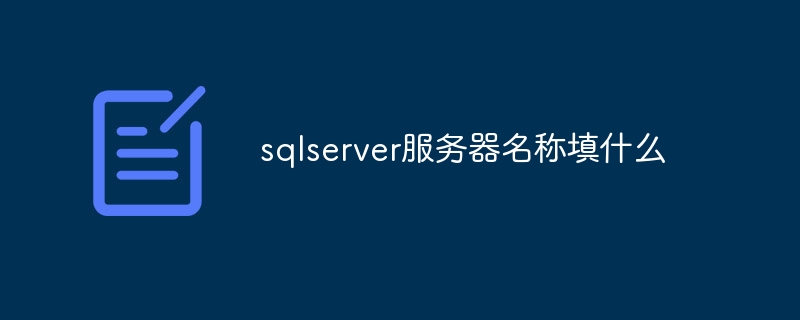Home >Common Problem >What to fill in the sqlserver server name?
What to fill in the sqlserver server name?
- 下次还敢Original
- 2024-04-05 20:24:191611browse
SQL Server server name is used to identify the computer running the database engine. It is a unique name. When filling it out, it is recommended to use the fully qualified domain name (FQDN) of the server to ensure uniqueness and easy identification. In special cases, a NetBIOS name or IP address may be used, but please note that it is case-sensitive, has no space restrictions, cannot exceed 63 characters in length, and cannot begin or end with a hyphen.

SQL Server server name
SQL Server server name identifies the computer or virtual machine running the SQL Server database engine machine. It is a unique name and cannot be used repeatedly within the same network.
How to fill in the SQL Server server name
When filling in the SQL Server server name, you can use one of the following formats:
-
Fully Qualified Domain Name (FQDN): This is the complete domain name of the server, for example
server1.contoso.com. -
NetBIOS Name: This is the NetBIOS name of the server, for example
SERVER1. -
IP Address: This is the IP address of the server, for example
192.168.1.100.
Recommendation
It is generally recommended to use the fully qualified domain name of the server as the SQL Server server name. This ensures that the server name is unique and easily identifiable.
Special Cases
In some cases, you may need to use a NetBIOS name or IP address as the server name. For example:
- When the server is in an internal network without DNS.
- When the server is a virtual machine and the FQDN changes frequently.
Note
- SQL Server server names are case-sensitive.
- The server name cannot contain spaces.
- The server name cannot exceed 63 characters in length.
- The server name cannot start or end with a hyphen (-).
The above is the detailed content of What to fill in the sqlserver server name?. For more information, please follow other related articles on the PHP Chinese website!

